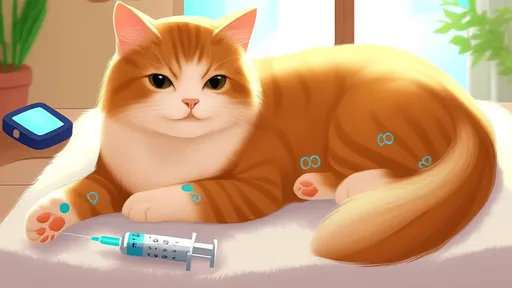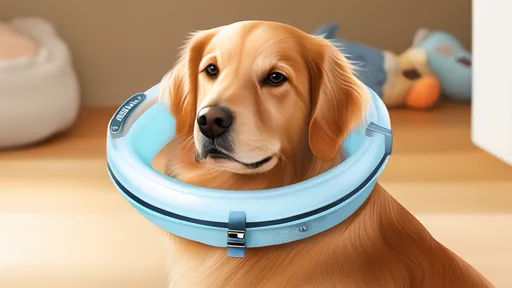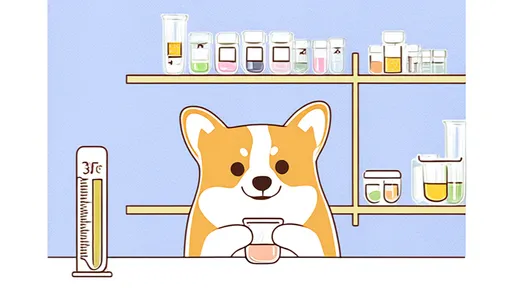For pet owners managing a diabetic dog or cat, insulin injections become a crucial part of daily care. While administering the correct dose is vital, the technique and location of these injections play an equally important role in ensuring effective treatment. Proper injection site rotation isn’t just a recommendation—it’s a necessity to prevent complications such as lipodystrophy, poor insulin absorption, and discomfort for your pet.
Diabetes in pets, much like in humans, requires consistent monitoring and precise medication. Insulin, when injected repeatedly in the same spot, can lead to tissue damage over time. This not only affects how well the medication is absorbed but can also create painful lumps or indentations in the skin. Rotating injection sites helps maintain healthy tissue and ensures that insulin is delivered consistently into the bloodstream.
Understanding the anatomy of your pet is key to successful rotation. Dogs and cats have several safe zones for injections, including the scruff of the neck, the shoulders, the flank, and the lower back. Each of these areas provides a suitable subcutaneous layer for insulin absorption. However, sticking to just one spot can cause scar tissue to form, making future injections more difficult and less effective.
Many pet owners unintentionally develop a routine of injecting in the same general area, often because it’s convenient or their pet is more cooperative. While this might seem harmless, it can lead to uneven insulin absorption, resulting in fluctuating blood sugar levels. A structured rotation plan helps distribute the injections evenly, reducing the risk of complications and improving overall diabetes management.
One effective method is dividing the body into quadrants and rotating through them systematically. For example, week one could focus on the left shoulder area, week two on the right shoulder, week three on the left flank, and week four on the right flank. This approach ensures that no single area is overused, giving previously injected sites time to heal and recover.
Another consideration is the technique itself. Pinching the skin gently to create a tent before inserting the needle ensures the insulin is delivered into the fatty layer beneath the skin rather than into muscle. This method is particularly important for lean pets, where the margin for error is smaller. Always use a fresh needle for each injection to minimize discomfort and reduce the risk of infection.
Monitoring your pet’s reaction to injections is also crucial. If you notice swelling, redness, or signs of pain at an injection site, it may indicate irritation or infection. Keeping a log of injection locations and any observed reactions can help identify patterns and adjust the rotation plan as needed. Consulting with your veterinarian about any concerns ensures that your pet’s treatment remains optimal.
Beyond physical care, the emotional aspect of administering injections shouldn’t be overlooked. Pets can become anxious or resistant if they associate injections with discomfort. Varying the injection site can help prevent localized soreness, making the experience less stressful for both you and your pet. Pairing injections with positive reinforcement, such as treats or gentle praise, can also create a more positive association.
In some cases, pets may develop a preference for certain areas, making rotation challenging. If your pet resists injections in a new spot, patience and gradual introduction can help. Start by gently handling the area without injecting, rewarding calm behavior, and slowly working up to administering the insulin. Over time, this can reduce resistance and make the rotation process smoother.
Technology and tools can also assist in maintaining a proper rotation schedule. Mobile apps designed for diabetes management often include features to track injection sites, doses, and blood glucose levels. These tools can provide reminders and visual guides to ensure consistent rotation, taking some of the guesswork out of the process.
Ultimately, successful diabetes management in pets relies on a combination of proper technique, diligent monitoring, and a well-planned rotation schedule. By paying attention to injection sites and adapting as needed, pet owners can help their furry companions maintain stable blood sugar levels and enjoy a better quality of life. Regular check-ins with a veterinarian will further support this effort, ensuring that any adjustments to the treatment plan are made with professional guidance.
While the responsibility of managing a diabetic pet may seem daunting at first, establishing a structured routine makes the process more manageable. With time, both pets and their owners adapt, turning what once felt like a challenging task into a seamless part of daily care. The key is consistency, observation, and a commitment to maintaining the health and comfort of your beloved companion.

By /Jul 31, 2025

By /Jul 31, 2025

By /Jul 31, 2025

By /Jul 31, 2025

By /Jul 31, 2025

By /Jul 31, 2025

By /Jul 31, 2025

By /Jul 31, 2025

By /Jul 31, 2025

By /Jul 31, 2025

By /Jul 31, 2025

By /Jul 31, 2025

By /Jul 31, 2025

By /Jul 31, 2025

By /Jul 31, 2025

By /Jul 31, 2025

By /Jul 31, 2025

By /Jul 31, 2025

By /Jul 31, 2025

By /Jul 31, 2025